Being rather specialist in our interests here at the Vintage Gun Journal, we rarely comment on guns or rifles of ‘foreign make’ as the proof houses used to refer to anything made outside of these islands.
However, occasionally something breaks the usual barriers down and demands our attention. Such was the case with a recent arrival. It was a hammer gun that, though bearing a French name, was very English in many of its features and certainly oozed the kind of quality that excites us here.
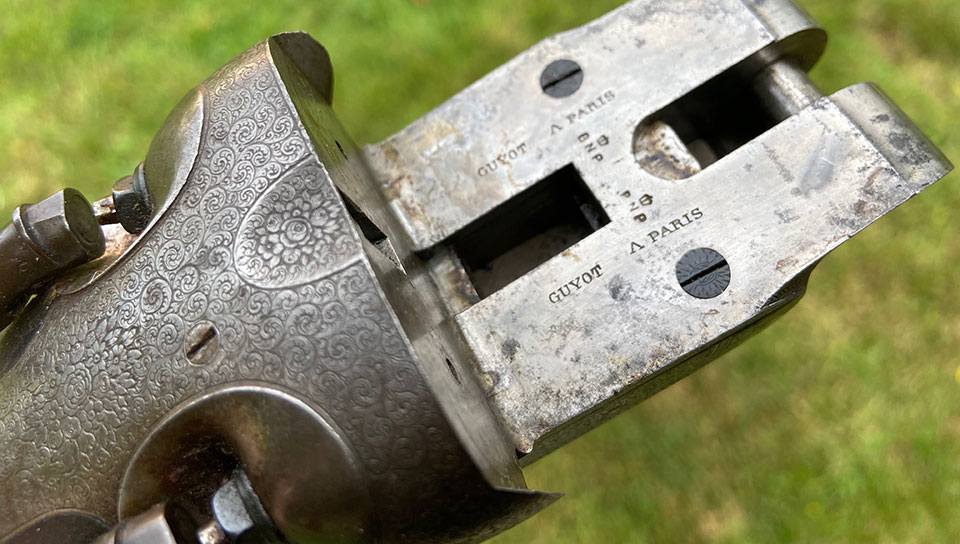
The name on the locks is ‘Guyot A Paris’ in a scroll banner, surrounded by lovely fine scroll engraving with bouquets behind the dolphin hammer and also on the fences and top strap. The locks are the very best quality rebounding bar action type and the style is bar-in-wood, with perfect jointing of wood to metal and metal to metal. Though it has crucial differences, the feel, quality and aesthetic of the gun is very Purdey.
Operation is by what some call a ‘Daw’ lever, or simply a ‘snap under-lever’. Pushing it forwards disengages the Purdey bolt directly and with great efficiency of force deployment. The absence of a spindle and a top-lever also allows for a stronger action behind the breech face, which remains solid. The splinter forend is removed by way of an Anson pushrod and the breech lock-up is secured with the addition of a Purdey concealed third bite.
The forend wood is worn smooth of chequer and I think the gun was re-stocked historically, to a very good standard, though with plain wood. The Whitworth steel barrels are 30” long and carry a broad rib that rises from the breech, and falls away towards the muzzles, with a’hump reaching its apex at around half-way. The fences are deep and have side clips and two breech pins one behind the other. This gun was made to be very rigid and solid. I expected to see 2 3/4” chambers but they are 2 1/2” and sport Birmingham proof marks of 1925 Rules of Proof. The proof marks are a lot later than the gun.
The trigger plate is engraved; ‘ Charles Lancaster Single Trigger Patent’.
The gun is remarkable for its quality and distinctiveness but one feature not yet mentioned is perhaps its most interesting. It is fitted with a selective single trigger. The trigger plate is engraved ‘ Charles Lancaster Single Trigger Patent’ and the selector slide, which runs along the right side of the trigger has a gold inlaid ‘R’ (for Right Barrel), which is covered when the slide is pushed forwards.
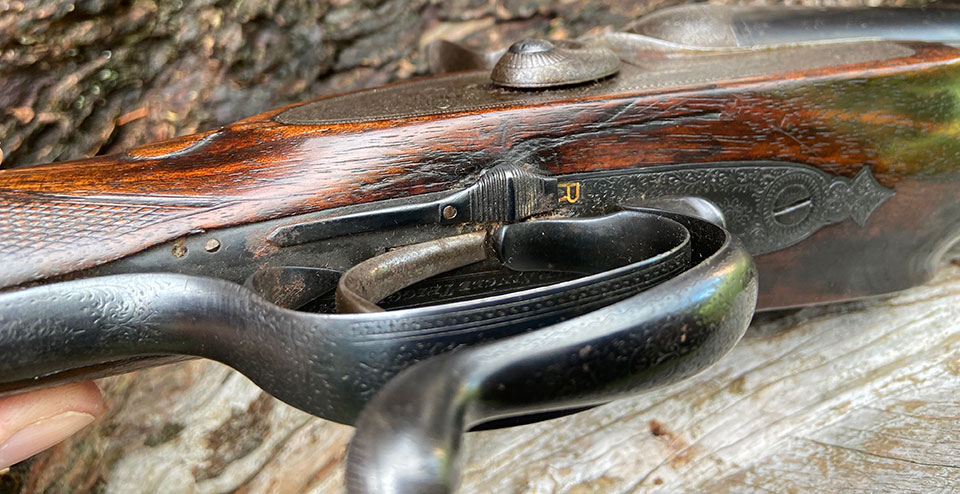
Guyot is a firm about which I know very little. When guns carrying the name appear for sale, they are invariably of fine quality. I have seen percussion target pistols, Anson & Deeley guns and hammerless side-locks as well as hammer guns by the maker but I confess his history is not known to me, nor to anyone I talked to about him.
What is clear is that this French gun carries a significant number of British patent features. The Charles Lancaster Single Trigger Patent, also known as the ‘Thorn Selective One Trigger’ is illustrated in The Art of Shooting. H.A.A. Thorn was the owner of Charles Lancaster and patent holder of numerous mechanisms. The system involves a pivoted selector that swings from sear to sear. This trigger went through several modifications between 1895 and 1903.
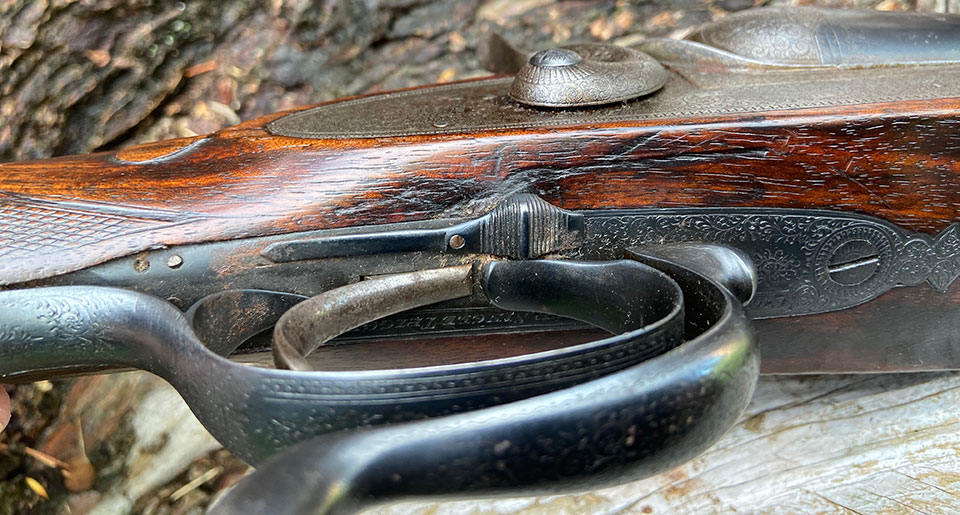
It is easy and tempting to speculate that this gun was built in Britain to order for Guyot. Some Belgian firms were certainly capable of building best quality, complicated guns. Take a look at some Lebeau Corally Purdey-patent pigeon guns if you want evidence of that.
Even a light pigeon gun will normally weigh a quarter of a pound more...
The gun is very nicely weighted and feels comfortable and lively in hand. Weight is seven pounds exactly and it balances on the hinge pin. So, though it has many features commonly associated with pigeon guns, it is lighter than most. Even a light pigeon gun will normally weigh a quarter of a pound more, at least. There is no doubt that it would be a good combination of fast-handling and stable, with the characteristics it has, so perhaps it was some competitor’s concept of the ideal.
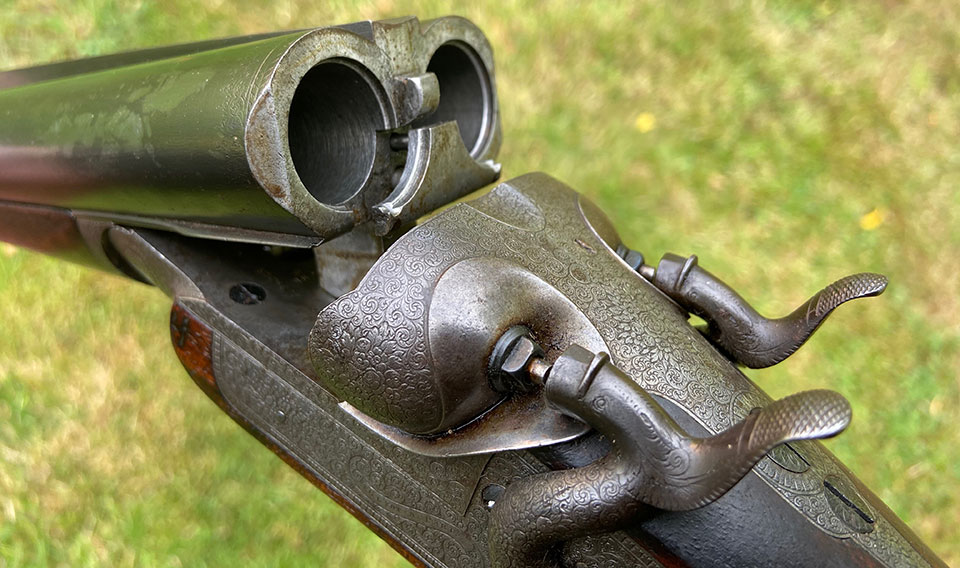
Unfortunately, the barrels are way below the recommended minimum and the ribs are loose. The current market is not strong for continental guns and this would not recoup the cost of restoration, as sleeving is necessary as well as other cosmetic work to the woodwork and service of the mechanisms.
Is it a good enough gun to warrant the work? In my opinion it is, if you want the gun for yourself, but as a commercial prospect it doesn’t work. It belongs to a chap who has known it since he was a child. He is unsure what to do with it now. I hope he decides to restore it - but before he does I’ll take it to the shooting ground and give that single trigger a good test to make sure it is reliable.
This is not the first single trigger hammer gun I have seen; I once had one by William Palmer Jones, but it is certainly the nicest.
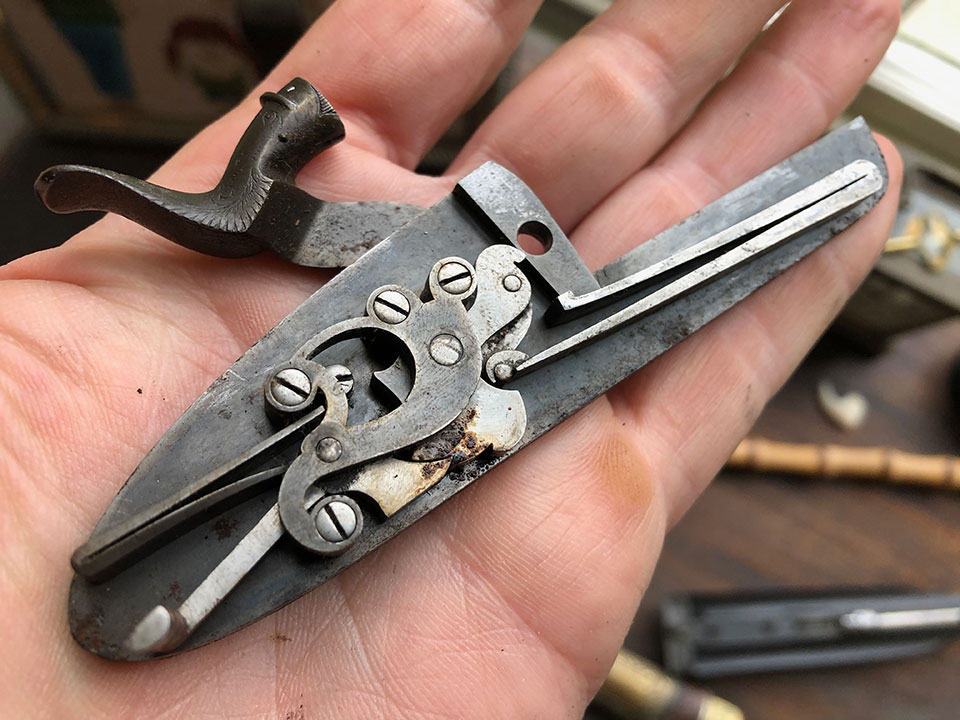
Published by Vintage Guns Ltd on (modified )




